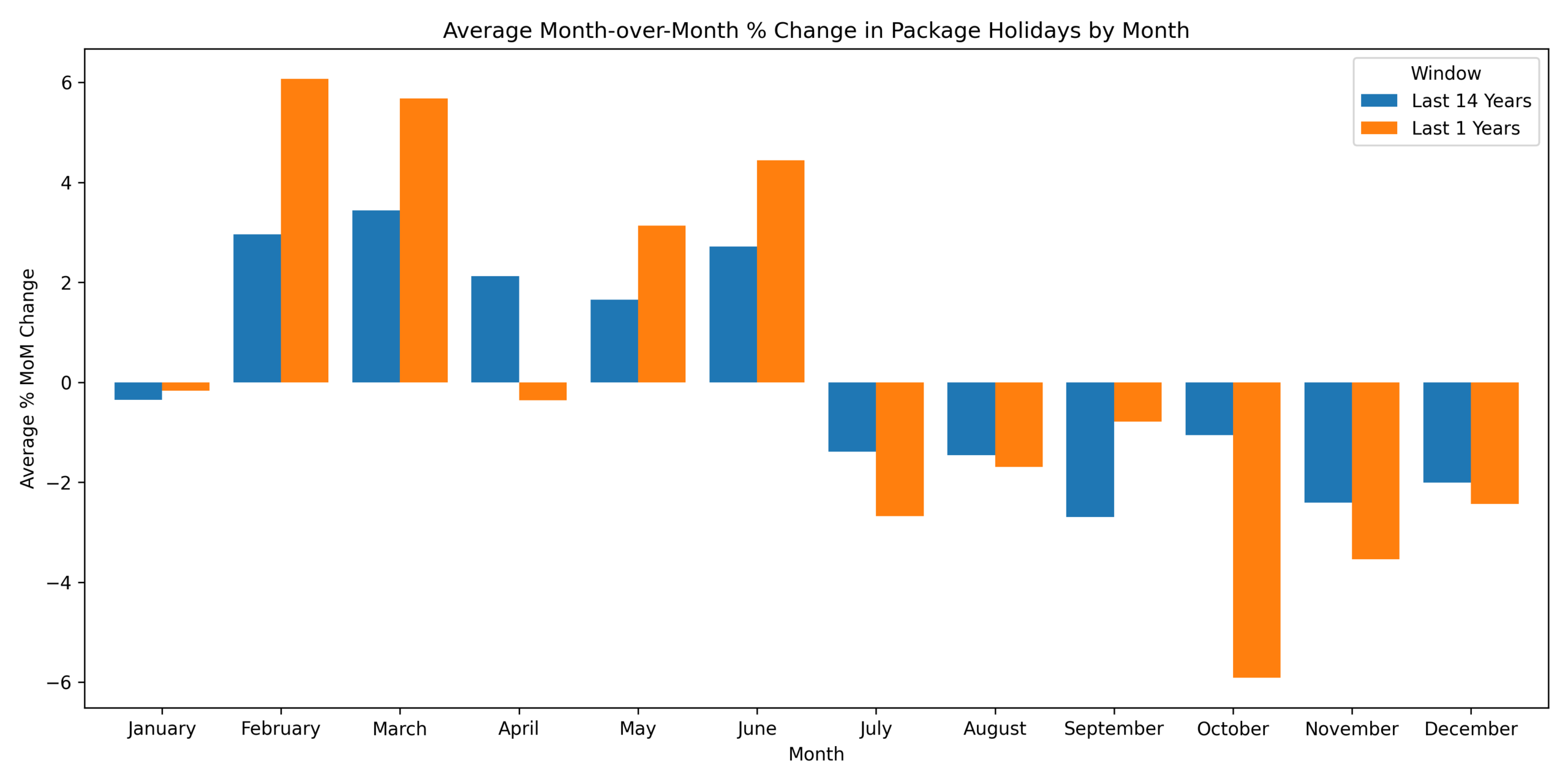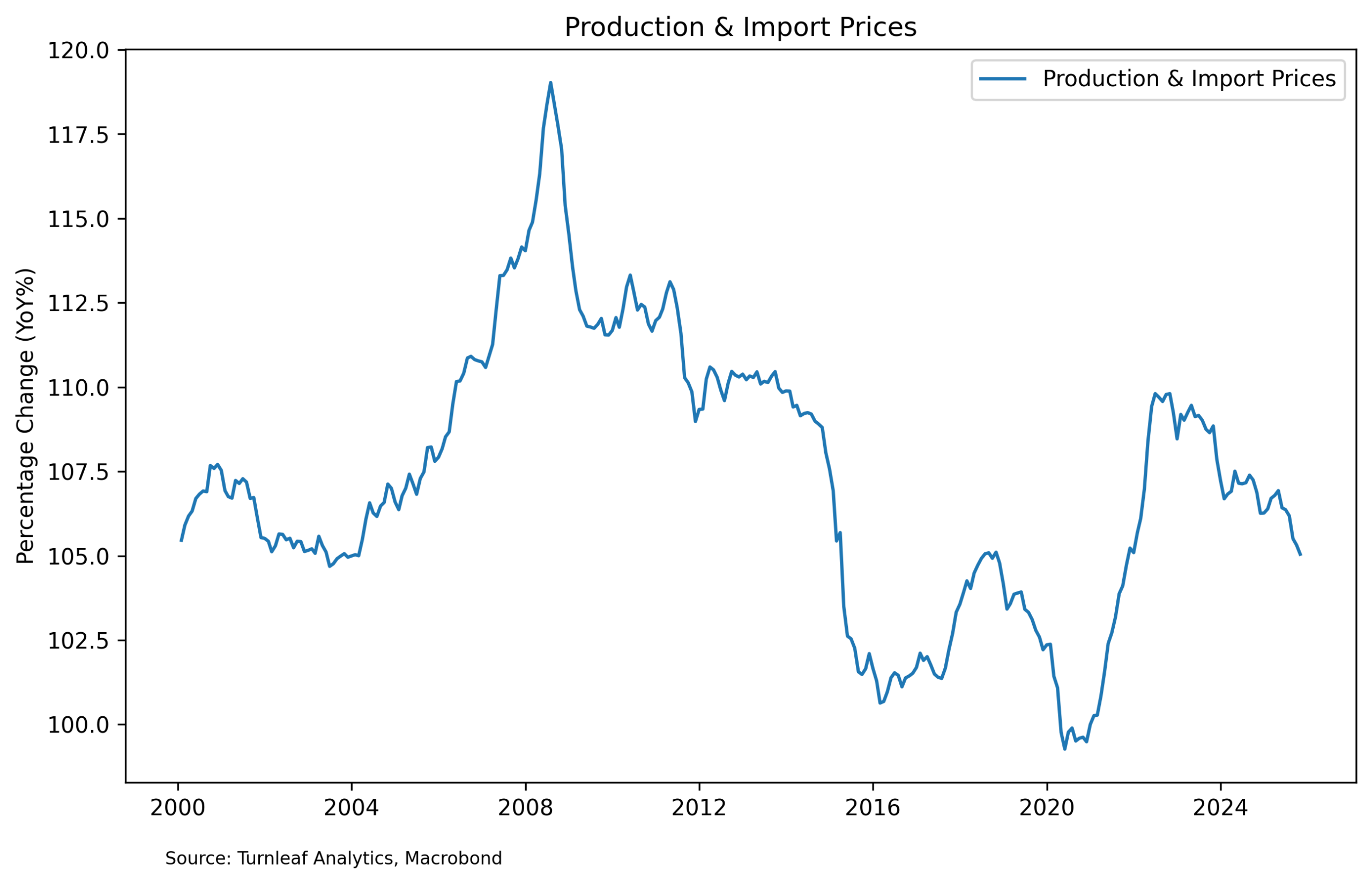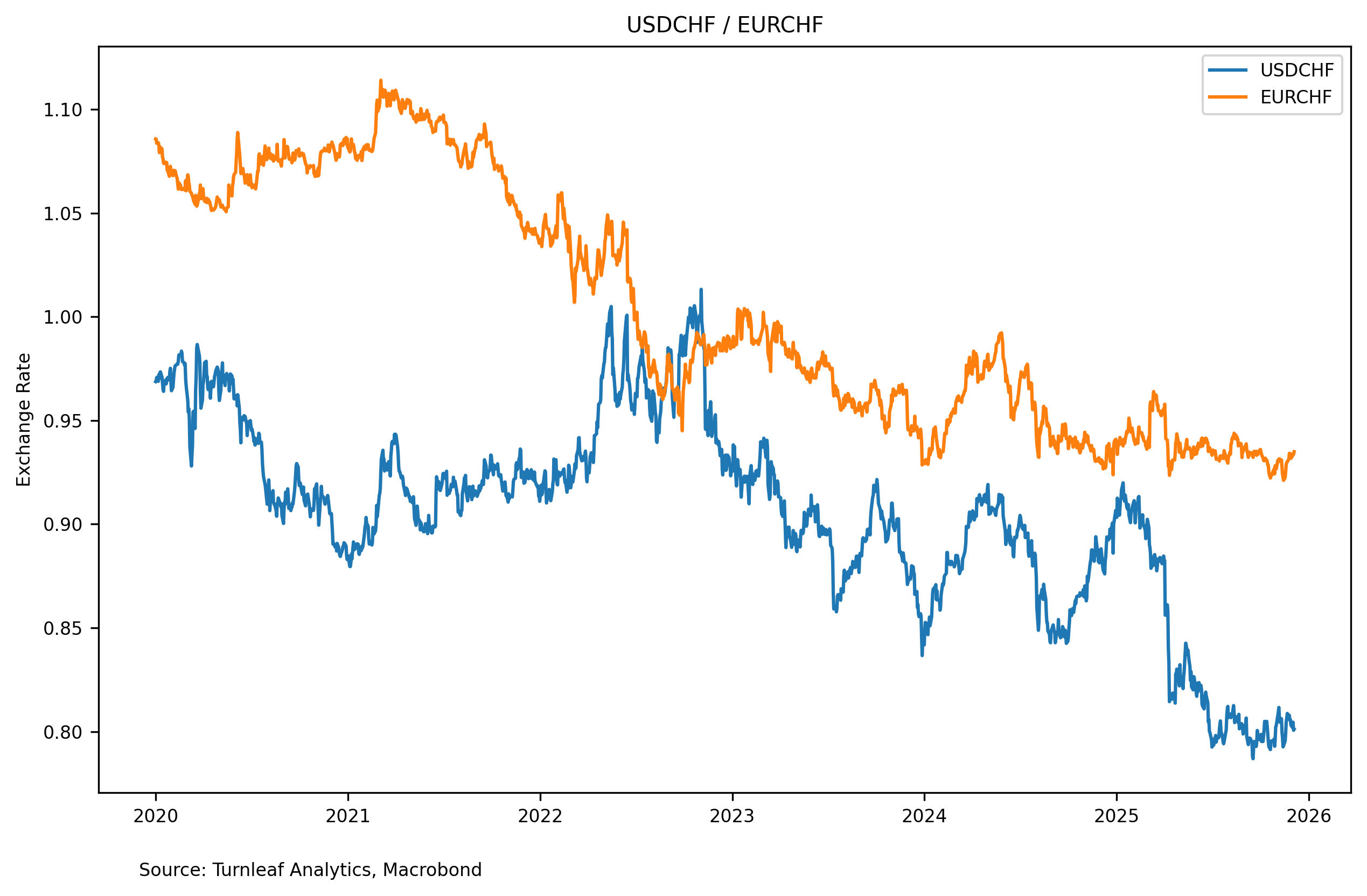Featured Research
Macroeconomic Insights: Switzerland CPI – Inflation Not Hot Not Cold
Last month Turnleaf argued that Switzerland was escaping deflation but still stuck near 0% inflation over the next year, with any firming coming mainly from tax changes and services inflation, while a strong franc kept goods prices pressured. November's 0.02% YoY...
Macroeconomic Insights: Switzerland CPI – Inflation Not Hot Not Cold
Last month Turnleaf argued that Switzerland was escaping deflation but still stuck near 0% inflation over the next year, with any firming coming mainly from tax changes and services inflation, while a strong franc kept goods prices pressured. November’s 0.02% YoY print (Turnleaf: 0.05% YoY) largely validates this view, with discretionary items like package holidays, hotels, cars and food falling, partially offset by higher rents, heating oil and air fares.
Looking ahead, we expect headline CPI to hover around 0% YoY until mid-2026, with brief negative readings as base effects roll through, before returning toward 0% (Figure 1 – PAID). Core CPI should track slightly higher but follow the same path. With the franc continuing to appreciate and energy prices subdued, we see almost no underlying price drift. The only upward pressure comes from: (1) electricity solidarity surcharges covering grid enhancements and steel/aluminium industry aid, and (2) modest services inflation from rents. Importantly, the previously expected VAT increase from 8.1% to 8.8% has been delayed to 2028, removing a key upside risk for 2026.
Seasonal factors dominate near-term dynamics. Travel, clothing and some food categories should see heavy year-end discounting, though franc appreciation hasn’t notably altered these patterns (Figure 2A & 2B). The turn of the year typically brings regulated tariff resets including health insurance premia, rent adjustments with one exception: public transport prices are frozen for 2026. We still expect a modest early-2026 rebound as discounts unwind and annual adjustments feed through, but the magnitude will be smaller than initially anticipated given the VAT delay and transport freeze.
Figure 2A
 Figure 2B
Figure 2B

Producer and import prices confirm absent pipeline pressures. The index has fallen from its 2022 peak of 119 to 105-106, with continued softening through late 2025 erasing the 2023 rebound (Figure 3).
Figure 3

This leading indicator signals goods inflation will remain subdued, leaving any price increases to come from domestic services or regulated tariffs which are both constrained by weak demand. Unemployment has drifted to 3.0% from very low levels, and while lending grows, overall activity remains unspectacular. Housing is the notable exception where rent inflation has been positive, representing the main domestic factor preventing outright deflation. Without rent support, Switzerland would likely be experiencing negative CPI readings more consistently. Oil, shipping costs, and Eurozone/US imported inflation stay benign, while the strong franc continues to act as a structural brake on goods prices (Figure 4).
Figure 4

The persistent inflation undershoot puts the SNB in an uncomfortable position heading into its December 12th meeting. Markets currently price only a 20% probability of negative rates returning, but 2Y government bonds have traded below zero since May 2025, suggesting investors see subzero territory as inevitable. With Switzerland’s debt-to-GDP at just 37% and minimal new bond supply planned for 2026, fiscal constraints aren’t the binding issue. Instead, the economy depends heavily on international trade, particularly with the US and EU, where recent US tariff announcements and hopes for German recovery are needed to weaken the franc and restore export competitiveness.
November’s release confirms Switzerland is operating at the lower boundary of its target with little endogenous pressure to move higher. Near-term, a technical bounce at the start of 2026 is likely, followed by readings fluctuating around zero and occasionally dipping negative. Further out, as seasonal noise fades, the forecast edges up but stays below 1%, supported by rents and slightly firmer energy prices, restrained by muted growth, contained imported inflation and anchored expectations.
Research Archive
Turnleaf Forecast Review: Recent Misses and Outcomes
This issue aims to clarify several of Turnleaf’s and the market’s forecast deviations over the past few months. Below, we outline key insights and performance drivers across a...
Macroeconomic Insights: India’s Inflation Paradox – Headline Drops, Core Rises
In recent forecasts, Turnleaf has observed an interesting trend in India’s inflation dynamics. While headline inflation has been trending downward, largely driven by a decrease...
Macroeconomic Insights: Polish Inflation – What Could Be, What Won’t Be in 2025
Recent retail sales in Poland have come in below expectations (-0.5%YoY in February 2025), with a significant decline driven by vehicle sales, followed by reduced consumption in...
Macroeconomic Insights: Mexico’s Inflation Path In Tariff Uncertainty Limbo
The tail of our inflation curve is currently driven by two key factors: U.S. tariffs set for April 2, 2025, and Plan Mexico, which aims to revitalize domestic manufacturing and...
Macroeconomic Insights: How Germany’s Fiscal Stimulus Could Reshape Its Inflation Outlook
Amid shifting geopolitical tensions and the need to revitalise its economy, Germany is preparing for a massive fiscal stimulus that will allocate up to $1 trillion in defence and...
Emerging Markets: Turnleaf Discusses Impact on Hungary’s 10% Profit Margin Cap Restriction on Inflation
Policy: In Hungary, from March 17 to May 31, 2025, a 10% profit margin cap will be imposed on 30 essential products, limiting companies' profits on these items. Small independent...
Macroeconomic Insights: U.S. Inflation is Coming, But Not Where You Expect
Since taking office, President Trump has aggressively worked to revitalize domestic manufacturing by focusing on the U.S. trade balance. A key part of this strategy has been...
Learning from running financial models live
Let's say you are the world's best burger chef (we all have ambitions, right). You'd be serving up all manner of burgers for your customers. It would be odd though, wouldn't it,...
Macroeconomics Insights – Beyond Tariffs: How Uncertainty is Steering U.S. Inflation Expectations
When we forecast inflation, our goal is to account for as much explainable variation as possible, using available data and reasonable assumptions about how prices evolve....
Macroeconomic Insights: Tariffs, Manufacturing, and Mexico Inflation
This article marks the start of Turnleaf’s series on how U.S. tariffs shape inflation dynamics across Latin America (LATAM). Among the economies we monitor—Colombia, Brazil,...
Macroeconomic Insights: How U.S. Tariffs and Eurozone Weakness Are Shaping Chinese Inflation
The trajectory of Chinese inflation will largely depend on its sensitivity to U.S. tariffs and its ability to sustain domestic GDP growth through external demand, particularly...
Macroeconomic Insights: Prices to Increase in February 2025 as Canada’s Tax Holiday Takes a Holiday
Between mid-December 2024 and mid-February 2025, the Canadian government implemented a GST/HST tax holiday, exempting beverages, restaurants, children’s clothing and footwear,...
Macroeconomic Insights: Fueling the Inflation Fire – Turnleaf’s Turkish Inflation Curve Shifts Upwards
Turnleaf’s latest data has pushed Turkey’s inflation outlook higher than consensus forecasts. There are multiple reasons for this which we will explain in this note. One of the...
Macroeconomic Insights: Assessing the Inflationary Impact of U.S. Steel & Aluminum Tariffs
The newly announced 25% tariff on U.S. steel and aluminum imports introduces cost pressures across global supply chains. However, the key question is not just how markets react,...
Emerging Markets: January 2025 Colombia and Hungary CPI YoY Forecast Review
2025 Colombia CPI YoY Above Consensus Due to Global Inflation Pressures Turnleaf’s CPI YoY model projects Colombia inflation well above consensus 12 months out, as it more...